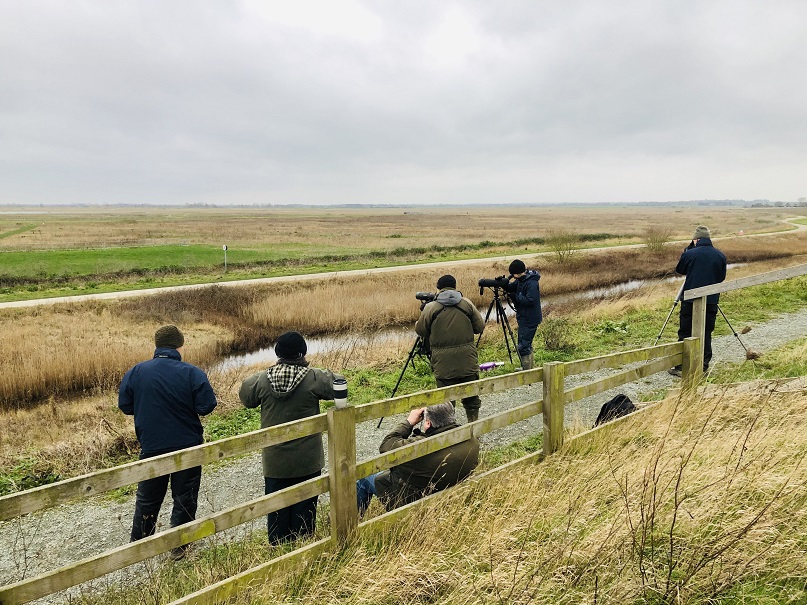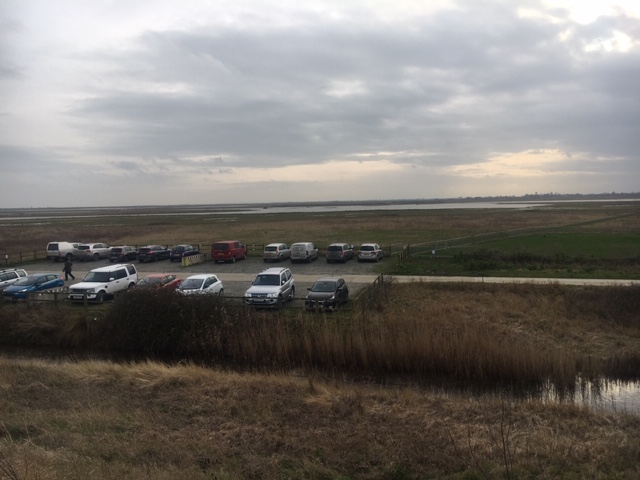Wallasea raptor watch

Ruth Tingay and Mark Avery from Wild Justice went raptor watching yesterday afternoon at a rather chilly Wallasea Island RSPB nature reserve in Essex.
We see that we aren’t the only ones to have visited Wallasea recently and it’s a great place for birdwatching; there were large numbers of waders on show (mostly Oystercatcher, Golden Plover, Lapwing, Knot, Curlew, Redshank and Dunlin) with ducks, geese and swans and Grey Herons, Little Egrets and Great Egrets.
This newly created wetland was formerly a very large wheat field but now it is a nature reserve. It’s a good place to see birds of prey and we saw lots of Kestrels hovering along the sea wall, Buzzard, a very distant Peregrine, several Marsh Harriers and a ringtail (adult female or young male (probably the former, we thought)) Hen Harrier.
Hen Harriers breed in the uplands of the UK, very rarely in the lowlands, and the ringtail we saw yesterday, if it was a British bird and not a visitor from the continent, will have been hatched or attempted to nest itself in upland areas such as the Yorkshire Dales, North Wales, or the Highlands of Scotland. Hen Harriers are highly persecuted birds, because in summer they eat a wide variety of small birds and voles but their diet includes Red Grouse, and people will pay a lot of money to shoot Red Grouse whereas Hen Harriers don’t pay anything. So Hen Harriers are illegally killed by shooting interests on far too many grouse moors. Illegal raptor persecution is just one of the reasons why Wild Justice launched an e-petition last summer calling for a ban on driven grouse shooting. That e-petition received over 100,000 signatures and should be debated in the Westminster parliament in the coming weeks. Moorland management for grouse shooting was also criticised by the Committee on Climate Change last week – they called for a ban, starting this year, on the burning of peatland habitats for grouse shooting.
So, the Hen Harrier we saw on a newly created coastal wetland in the south of England yesterday is a survivor of wildlife crime in the uplands and is a poster girl for more sustainable upland management. Let’s hope she enjoys being an Essex girl for a while and then chooses a safe place in the uplands to try to nest. We wish her safe travels and a safe nesting season.

We’ll be raptor watching at other sites over the next month or so (we are waiting for news from Kent!) and we’ll update the details (click here) soon. Our next visit will be to Titchwell RSPB nature reserve where we understand we’ll be on a guided walk looking at harriers coming in to roost.
Wild Justice is fundraising in the run-up to the first birthday of its launch – click here for details of how to donate. Thank you for all your support so far.
